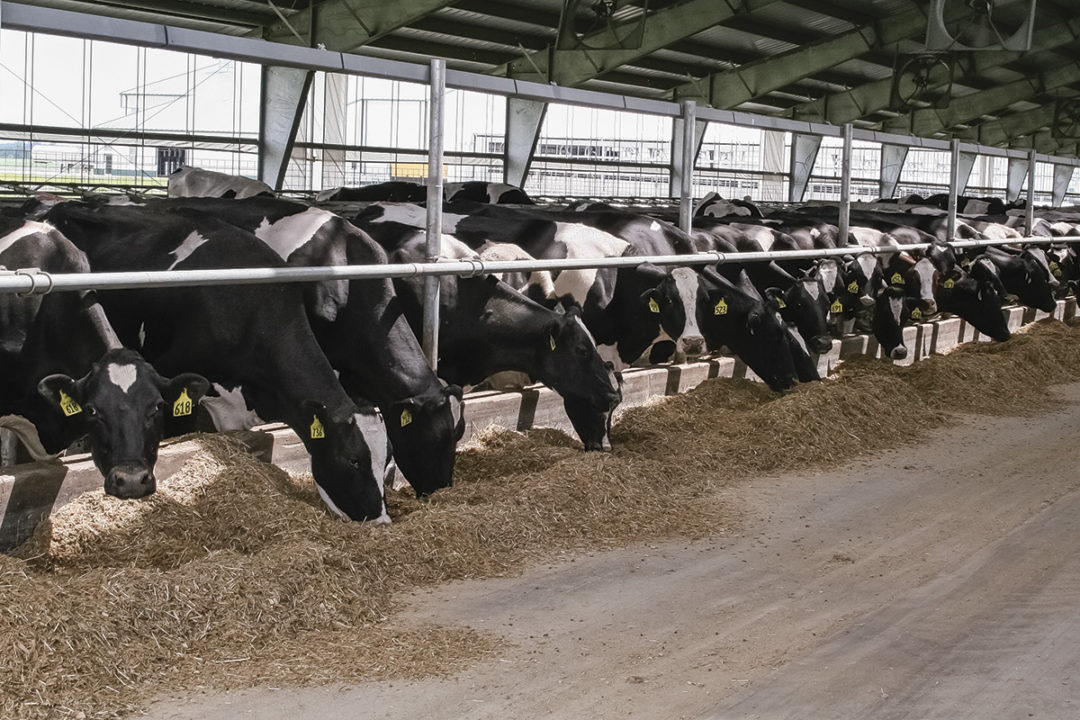Each day we are learning more and more about what goes on inside the dairy cow. We know that each cow has a microbiome made up of trillions of bacteria, fungi, protozoa and archaea that are involved in either supporting or limiting a myriad of body functions.
Probably the most important, hardest-working microbiome population resides in the rumen and intestinal tract. These organisms are responsible for breaking down plant fibers that provide energy and other nutrients for the cow.
But not all organisms in the microbiome are beneficial to the cow. Some can be harmful and cause significant issues inside the cow that could even be fatal.
Inhibit the negative and accentuate the positive
The more the microbiome is studied, the more we understand how to enhance the role of beneficial organisms and limit the function of harmful organisms using bacillus organisms.
Bacillus are spore-forming bacteria fed as microscopic spores that become active once they enter the cow. The first use of bacillus was to inhibit pathogens in the rumen and gastrointestinal tract. Pathogens such as E. coli, Clostridium perfringens, salmonella and others are present inside the cow’s digestive tract and can do significant harm. Certain bacillus strains can produce antimicrobial peptides that inhibit pathogen growth.
That first element of pathogen control is significant enough, but as more research was conducted, we began to notice that bacillus have the ability to do much more than just inhibit pathogen growth. They can shift microbial populations inside the animal, such as enhancing the population of fiber-digesting bacteria inside the rumen. This process can help improve degradation of plant material and help improve rumen efficiency.
Improve immune function
More research uncovered the ability of bacillus to impact tight junction proteins. This helps create a tighter barrier inside the small and large intestines and prevents pathogens from entering the bloodstream through the digestive tract. This helps prevent leaky gut syndrome, which can become a problem when cows are under stress – such as during transition or periods of excessive heat.
Because there are numerous strains of bacillus, one strain is not like the other, and each strain has a unique function. In the lab, we’ve seen that some strains of bacillus inhibit pathogens very well while others have virtually no impact. This holds true for the impact on the cow’s immune system and other elements.
It’s also important to understand that the environment outside the cow impacts the microbiome inside the cow, as well. We’ve seen this in research conducted on different clostridium species. Through our sampling program, we were able to determine that certain parts of the country have specific clostridium species that are not present in other areas of the country. Some of this is due to environmental factors – temperature, humidity, moisture levels, etc. – while different feedstuffs impact strain type, as well. For example, rations in California are generally higher in corn silage compared to New York rations, which generally have higher haylage concentrations, which has an impact on pathogen load and type.
Pathogen type and levels can also be different even between neighboring farms. In one instance, we had two farms separated by about 10 miles. They were run by the same family, so their feeding programs were the same. But when we did our sampling, we noticed that one farm had much higher pathogen loads than the other. It’s then that we discovered that the farm with higher pathogen loads was closer to the coast, which put it close enough to be in the flight path of invading seagulls contaminating the feed.
Region-specific bacillus formulations
Understanding this regional diversity, we’ve created regional batches of bacillus to target issues that happen in specific areas. We’ve also developed bacillus formulations for specific large dairies to help address specific challenges happening on them.
So, we know that bacillus can inhibit pathogen growth, improve rumen efficiency and support better immune health. Our next step is to learn more about how those three factors overlap. In other words, are cows more efficient because they are less inhibited by pathogens and have a stronger immune system, or is there a more direct efficiency benefit?
We assume that these three factors are interrelated. Increasing the tight junction proteins to make gastrointestinal tracts more resilient and inhibiting pathogen spread support better health, which enhances the performance of the cow. And performance continues to improve as a more-beneficial population of microbes is present in the rumen to support efficiency gains.
Producers who can benefit the most from including a bacillus product in the ration are those with reoccurring stressors on the dairy that the cows need to navigate. With bacillus products, producers can create more resilient animals that can overcome health and stress challenges.
Other bacillus-based products can inhibit pathogen growth and drive fermentation in silage as well as improve microbial decomposition, nitrogen retention and control pathogens within manure storage systems. Soon there will also be a product on the market that inhibits pathogen growth in recycled manure used for bedding.
How are bacillus products made?
We have nearly 30,000 different bacillus strains available in our laboratory. We test strains on a regular basis to determine which fit best for different regions and to create a formulation for a specific territory. A contract manufacturer specializing in custom fermentation scales up each of our proprietary bacillus strains. Our production team formulates based on our survey work and blends two to five strains together to create each unique regional formulation. Our quality team tests every lot of product manufactured to ensure it exceeds label guarantees and is free of any food safety contaminants. The product then goes to a premix facility to be included in a dairy premix. The premix then gets mixed into the total mixed ration (TMR) at the dairy; the larger volume of premix ensures a homogeneous mix in the TMR. The end goal is to provide high-quality microbial solutions applying 2 billion colony forming units per head per day.









